Experts say these are the perennials to avoid in the garden - and what you can plant instead
You might want to steer clear of these pesky perennials…
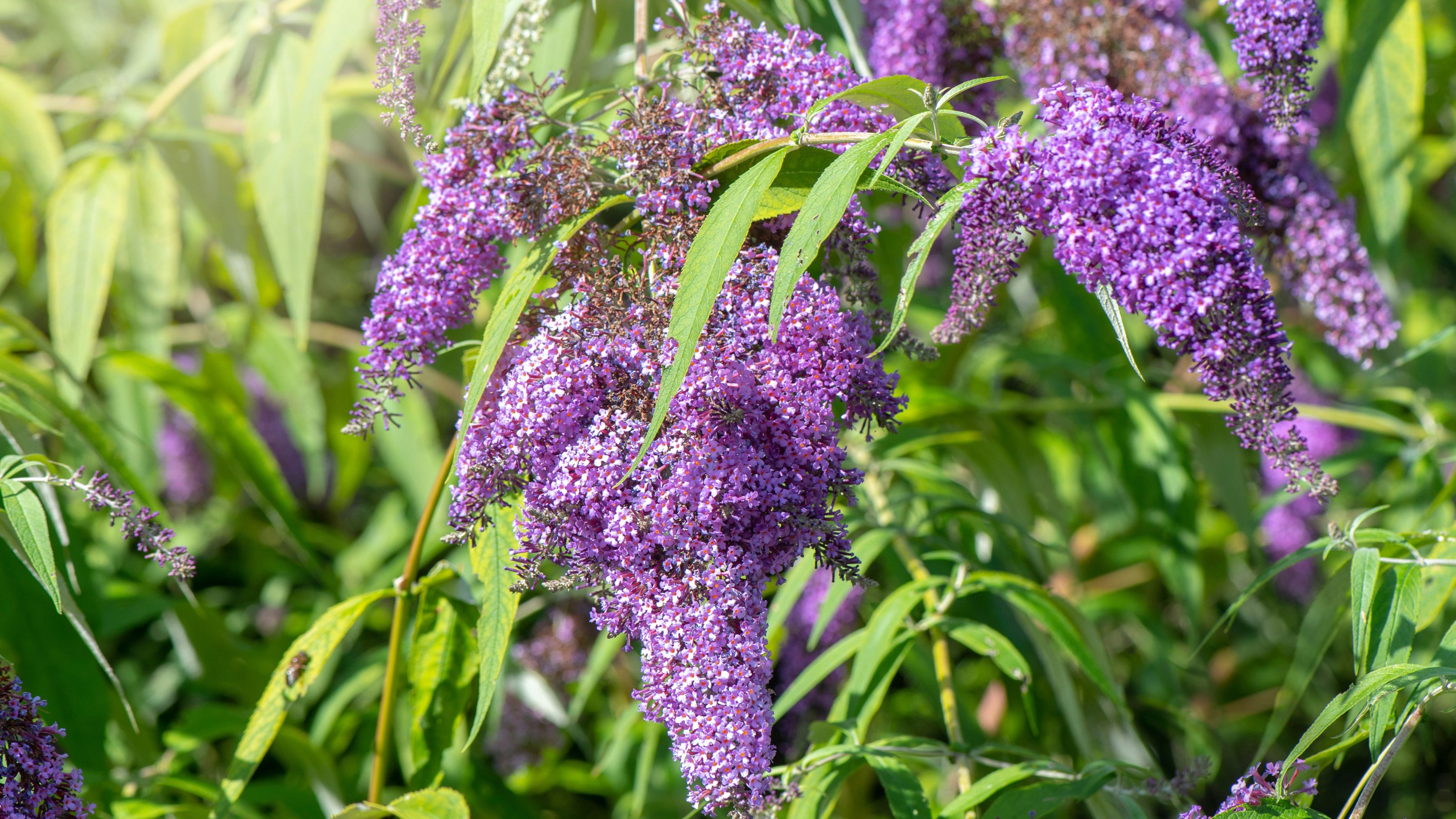

When you’re looking to fill your garden with flowers and foliage, perennials may seem like the way to go - and you’re not wrong. But you also need to be pretty choosey when deciding which perennials to buy, as you should avoid some perennials if you want a safe and healthy garden.
Essentially, a perennial is a plant that has a life cycle of over two years, meaning it provides luscious blooms year after year. And while a perennial’s ability to provide constant colour and vibrancy to an outdoor space is definitely a budget-friendly garden idea, it’s safe to say that some perennials also come with their challenges.
From invasive species that can quickly take over a small garden (and even a larger garden) to potentially deadly plants, these are the perennials to avoid. But don’t worry, we won’t leave you high and dry. We’ve also outlined safe alternatives to keep your garden bloomin’ lovely.
Perennials to avoid in the garden
‘Perennials can add colour, scent and personality to any garden,’ explains Morris Hankinson, director of Hopes Grove Nurseries. ‘However, there are some that are best avoided as they can be invasive or even toxic for animals and children.’ Thankfully, we’ve done the hard work for you and compiled a list of the perennials to avoid in the garden.

Morris Hankinson is the founder and managing director of Hopes Grove Nurseries Ltd, the UK’s only specialist grower-retailer of hedging plants. He established the thriving business in 1992, shortly after graduating with a Commercial Horticulture Degree from Writtle College, Essex.
1. Purple loosestrife
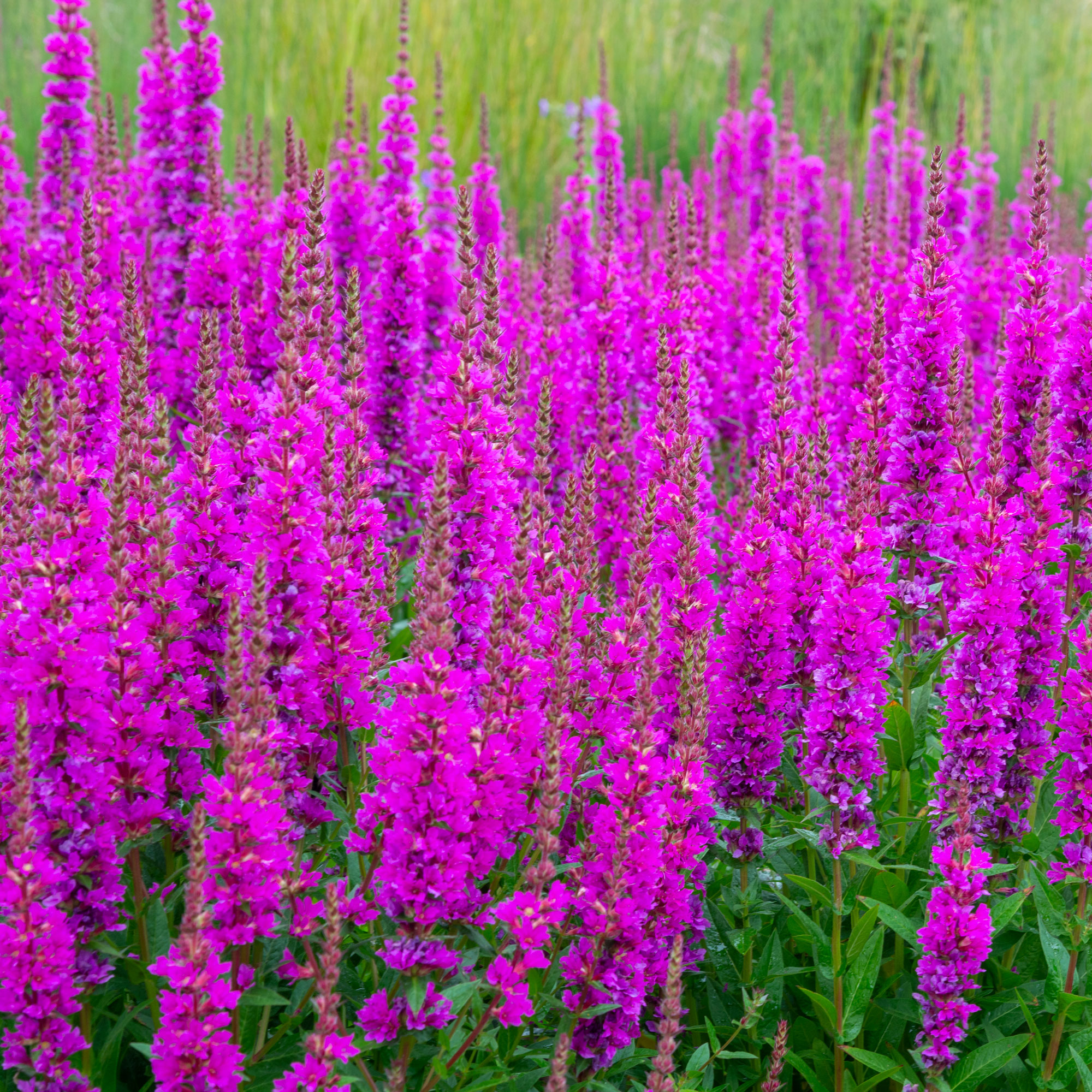
When wandering around the garden centre looking for perennials to spruce up your garden borders, you may opt for the brightest and boldest plants on the shelf - and purple loosestrife definitely stands out from the crowd.
With its long stems and vivid blooms, it can add much-needed height and colour to your outdoor space. However, most experts would urge you to avoid this perennial.
Morris explains, ‘While Purple loosestrife is very striking to look at and a great plant to attract pollinators to your garden, its ability to self-seed means it can become invasive if not maintained properly.’
Sign up to our newsletter for style inspiration, real homes, project and garden advice and shopping know-how
What to plant instead: If you love the tall, colourful nature of purple loosestrife, you’ll love lupins. Available in a variety of colours, they’ll bloom in the spring and die down in the winter. Just remember to deadhead lupins when they finish flowering.
Where to buy lupins:
- Thompson & Morgan: buy 'Russell Hybrids Mixed' bare root lupin plants.
- Dobies: stock up on lupin seeds to grow your own.
2. Rhododendrons
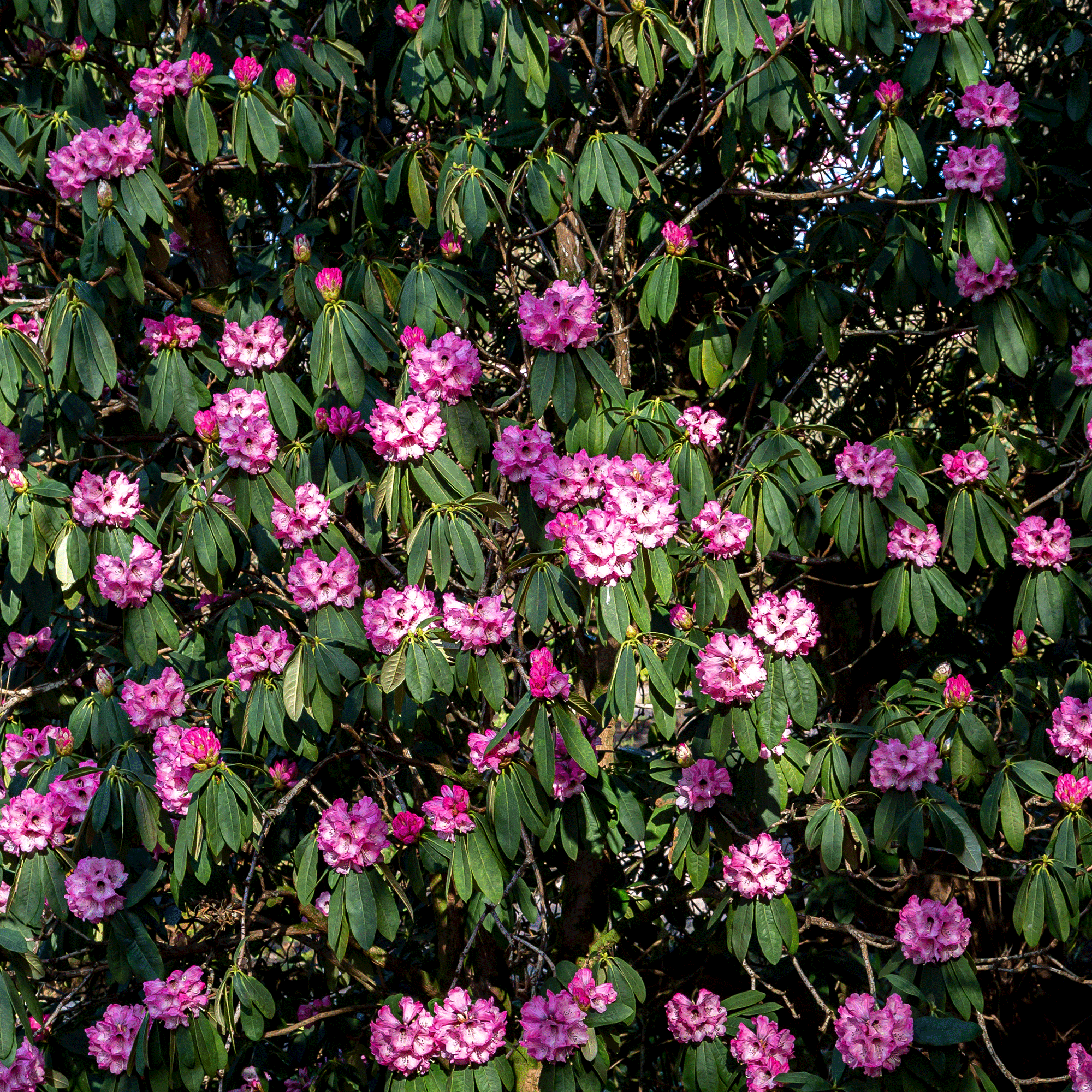
Sometimes the most beautiful plants are also the most deadly, and we’re sorry to say that rhododendrons are on that list. In fact, the rhododendron is just another plant to add to the list of pet-poisonous plants in the garden - and the problems don’t end there.
‘They might be beautiful but rhododendrons are toxic for dogs (and, if consumed in very large amounts, humans),’ explains Morris. ‘It's best to keep any furry friends away from this perennial!’
‘Even if you don't have a pet, you still need to be careful as to which species you plant as rhododendron ponticum is an invasive species that will take over your garden if not taken care of properly.’
And while it’s advisable to steer clear of this pesky perennial, you don’t have to avoid it completely if you can’t bear to have a garden sans rhododendrons. Just make sure you swot up on pruning rhododendrons and consider potting this plant up as part of your container garden.
What to plant instead: Although weigela is a deciduous shrub, it still looks very similar to the rhododendron. The trumpet-like flowers also come in a variety of colours, so you can choose some that suit your style.
Where to buy weigela:
- Primrose: buy a 2-litre pot of Weigela All Summer Peach.
- Crocus: brighten up your garden with weigela ‘Mango.’
3. Bamboo
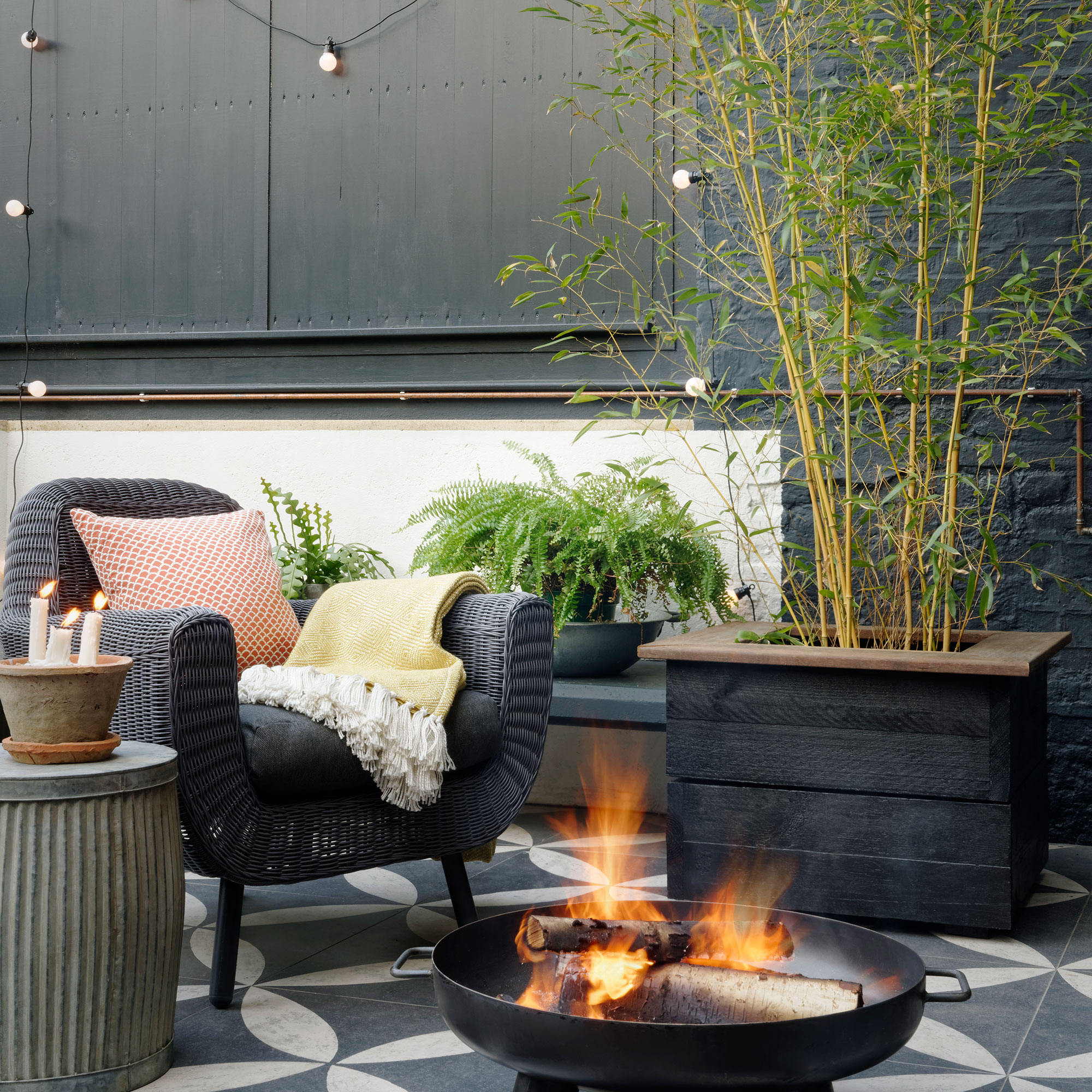
If you didn’t already know, bamboo is a perennial - and a pretty unique one at that. And while its impressive growing skills make it a popular choice for garden screening, experts have issued warnings about invasive bamboo.
Yes, bamboo can quickly grow out of control, and ‘running’ varieties have the potential to grow up to 30ft away from the main plant, pushing through brick walls and even popping up through wooden floors. In one extreme case, a Hampshire family was faced with a £100K repair bill when bamboo invaded their home.
Because of this, most experts would urge homeowners to avoid this perennial at all costs. But if you really love the idea of blocking out your neighbours with bamboo, you’ll want to read up on how to stop bamboo from spreading.
What to plant instead: Looking for a climbing plant for pots? You can’t go wrong with jasmine. As well as providing efficient screening qualities, this plant will also provide your garden with a stunning scent.
Where to buy jasmine:
- Suttons: A wide variety of colours and sizes of climbing jasmine on offer.
- Primrose: Buy a potted climbing jasmine with a support cane, ready for planting.
4. Wisteria
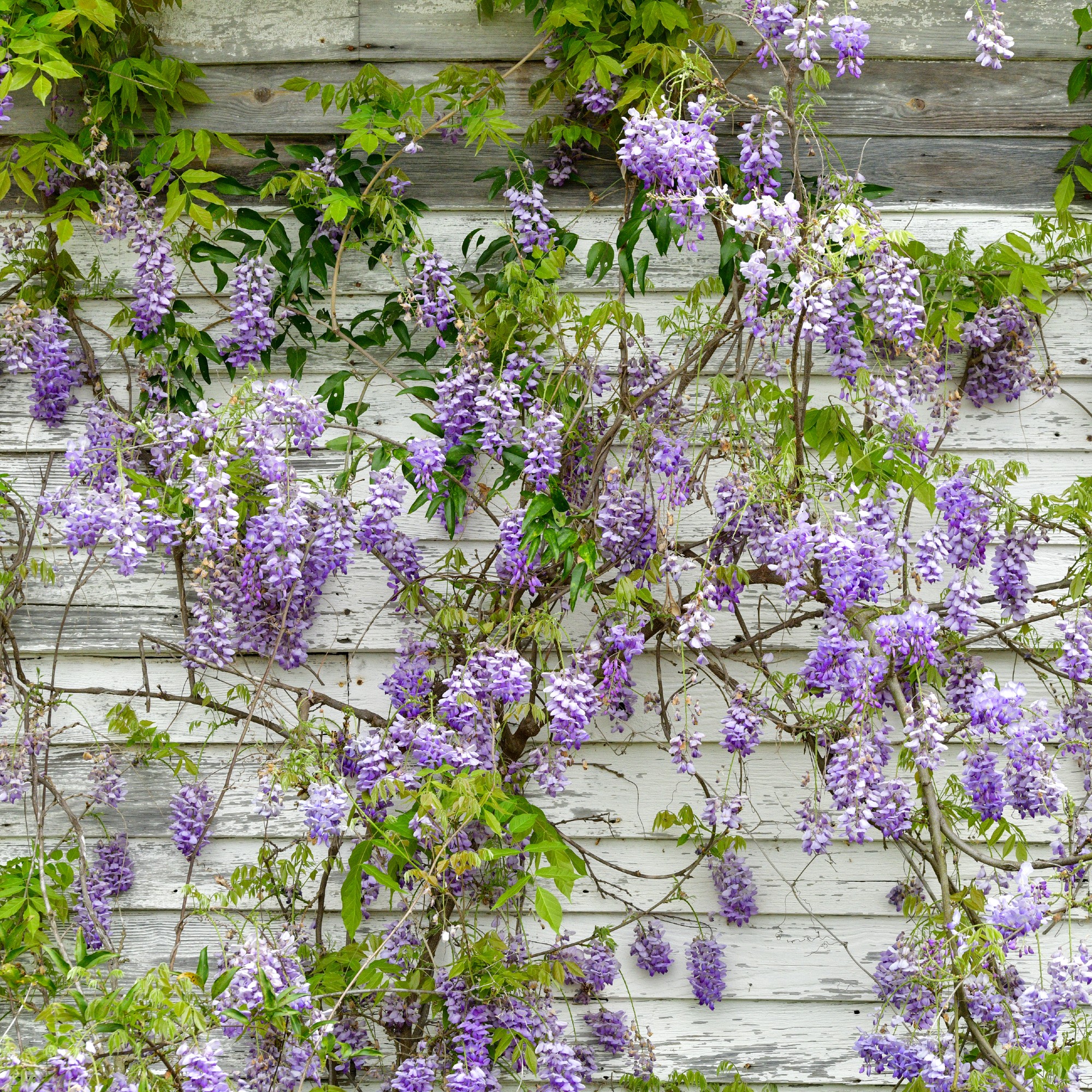
Yes, we’re sad to see this one on the list too. After all, you probably don’t need us to tell you that wisteria has grown massively in popularity over the past few years - and we have a certain Netflix show to thank for that. But if you’re looking to turn your garden into a scene from Bridgerton, you might want to think twice.
Although wisteria is one of the most stunning perennials out there, it’s also extremely fast-growing, and the strength of the plant can be problematic if you don’t know how to prune wisteria.
So, if you’re a novice gardener and will struggle to train wisteria in the way that it needs to be trained, we’d suggest steering clear. But if you’re willing to give it a go, it’s probably best to choose one of the best wisteria for small gardens so you don’t get overwhelmed.
What to plant instead: Although climbing hydrangea is still a vigorous climber, it’s generally considered to be much easier to control than wisteria. Plus, it still offers Regency-style qualities with its giant flowerheads.
Where to buy climbing hydrangea:
- B&Q: buy a climbing hydrangea in a pot ready to be planted.
- Dobies: pick up a self-clinging climbing hydrangea for your garden.
5. Foxgloves
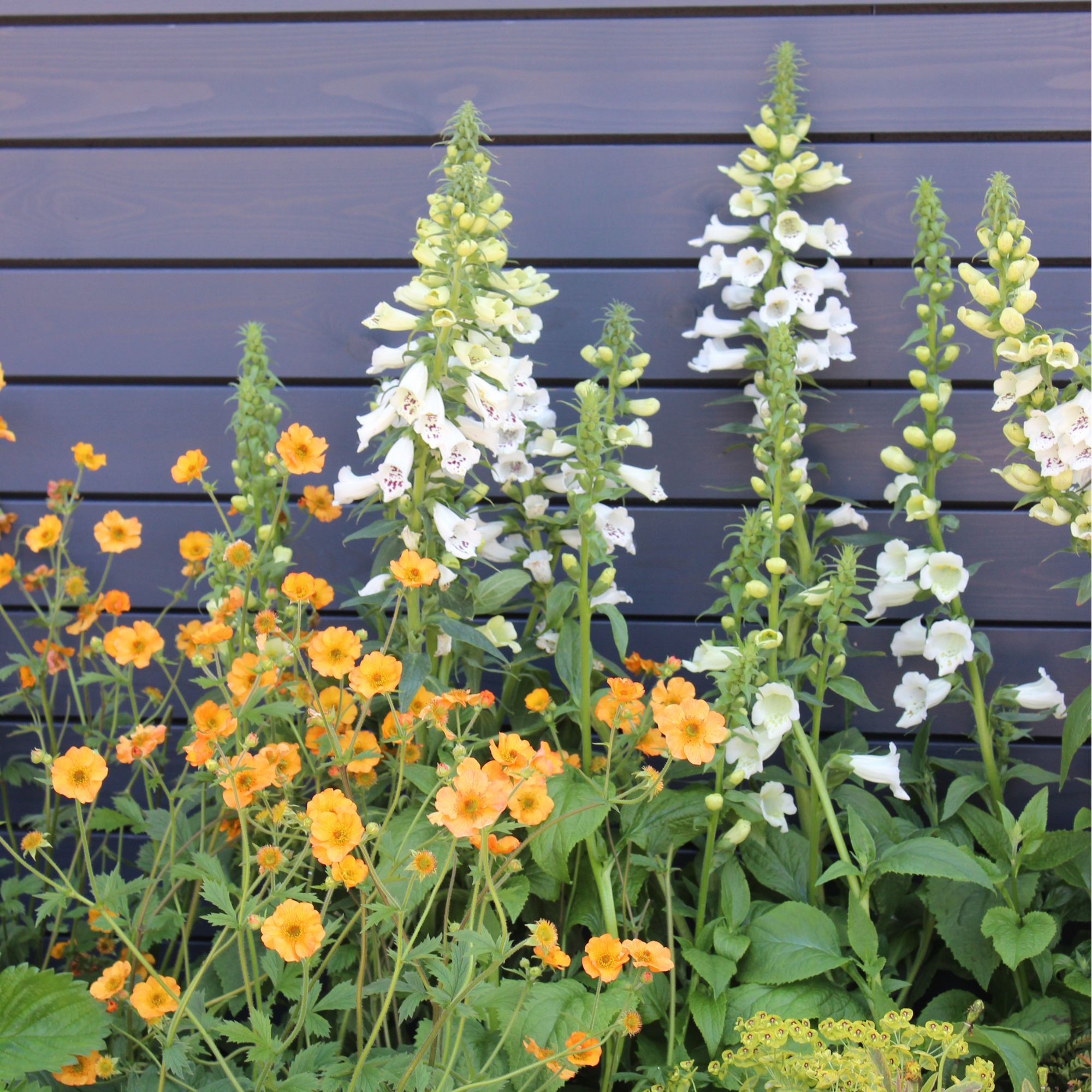
The Ideal Home team has gone a little foxglove mad recently. Seeing them dominate the 2024 RHS Chelsea Flower Show made us fall head over heels in love with them - but we’ve certainly questioned whether to grow foxgloves in our own gardens or not.
Morris explains, ‘Some refer to this as a short-lived perennial, while others class it as a biennial - either way, it's best to avoid it in your garden if you have pets or children as it's very toxic. Even a small amount could be fatal due to the cardiac glycosides which affect the heart.’
Yes, if you have kids (or even grandkids that use your garden as their own personal play park), it’s best to avoid this toxic plant for children. If you don’t have kids, however, you can get away with planting them - as long as don’t eat them!
What to plant instead: Penstemons are a great alternative to foxgloves. They offer the same bell-shaped blooms and aren’t toxic to animals or humans. Plus, you can buy them in a wide variety of colours.
Where to buy penstemons:
- Dobies: buy the low-maintenance Penstemon 'Ice Cream Collection'.
- Suttons: a variety of potted penstemon plants to choose from.
6. Japanese knotweed
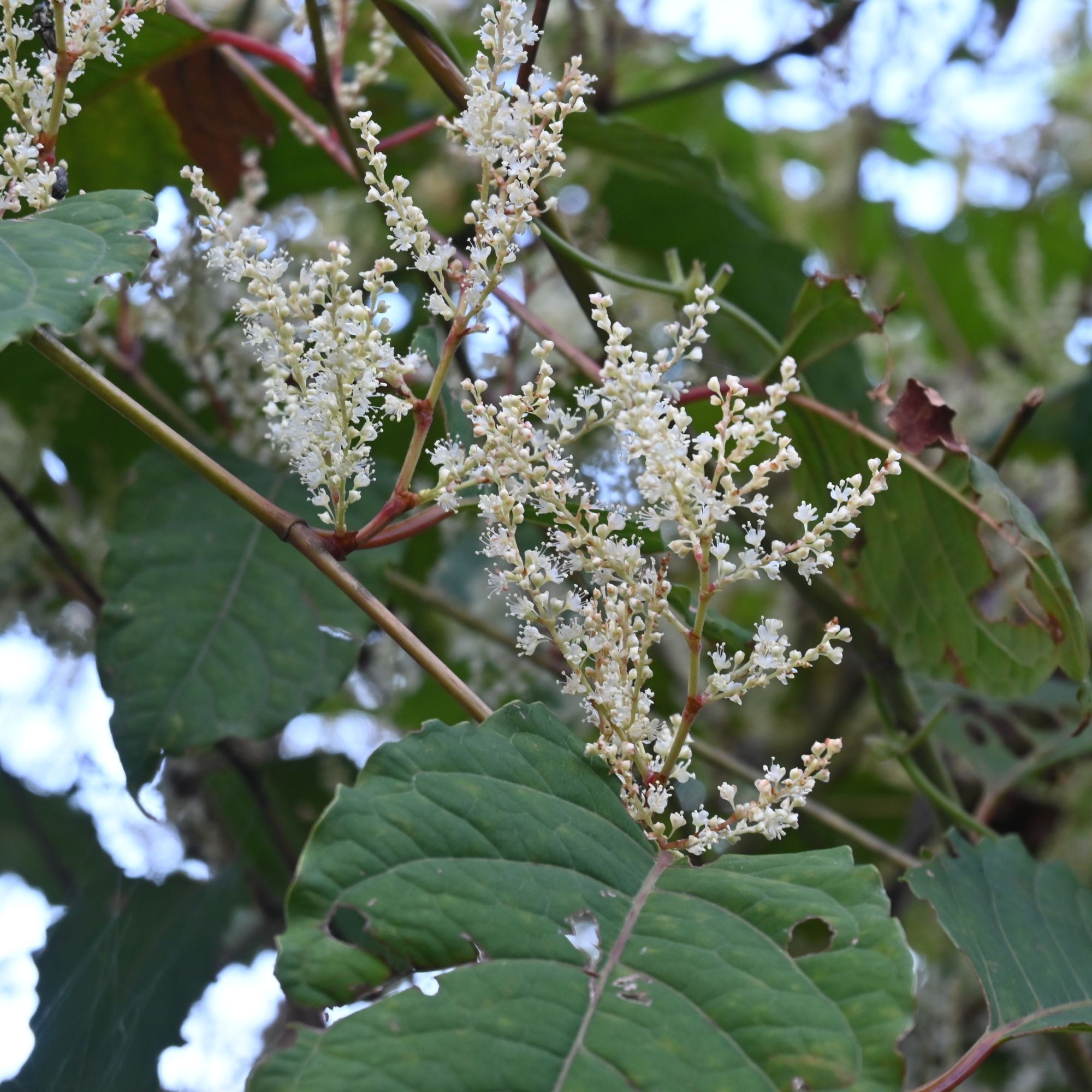
When choosing perennials for your garden, it’s highly unlikely that you’ll ever come across Japanese knotweed at the garden centre. Still, we wouldn’t be doing our jobs properly if we didn’t tell you to avoid planting this perennial.
That’s because Japanese knotweed isn’t just a perennial. It’s actually perennial weed, and you can be prosecuted for causing it to spread into the wild. That’s why you should always know how to get rid of Japanese knotweed.
Morris adds, ‘This herbaceous perennial is definitely not something you want to see spreading in your garden. Japanese Knotweed is a very invasive weed that needs to be removed immediately. You may be unable to sell your home if Japanese Knotweed is on your property and a certificate is required to prove it has been removed professionally.’
What to plant instead: Most people don’t choose to have Japanese knotweed in their gardens, but you can choose to enjoy the greenery of hostas. They’re a great bedding plant for shade, and the foliage is absolutely stunning.
Where to buy hostas:
- Crocus: buy potted hostas to fill your garden.
- Dobies: opt for Hosta 'Giant Leaved Mix' bare root plants.
7. Ox-eye daisy
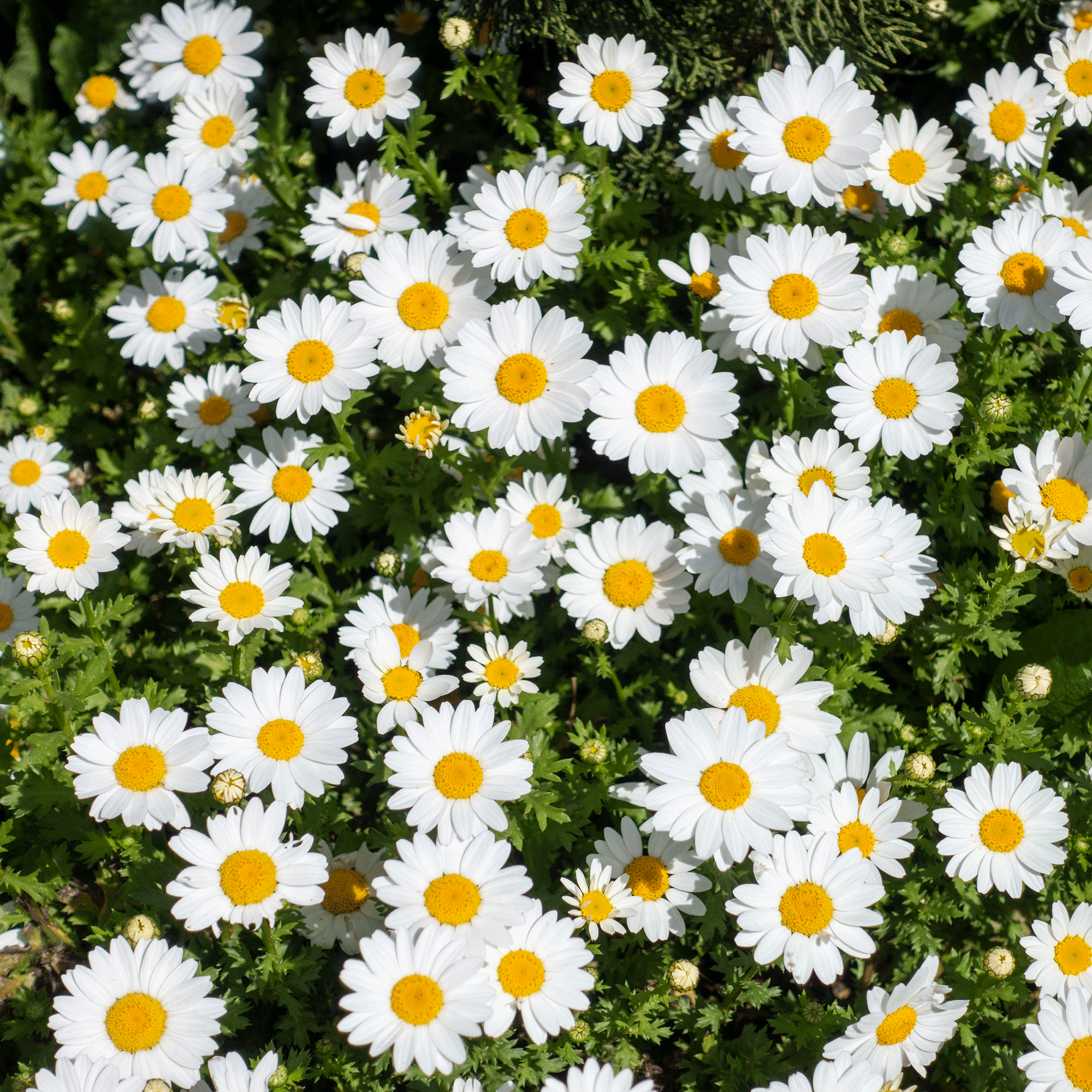
If you’re looking to turn a corner of your garden into a wildflower haven, you may be attracted to the ox-eye daisy - and we wouldn’t blame you. This perennial wildflower looks like a giant daisy, and can add some all-important height and vibrancy to your garden.
But the problem with many wildflowers is that they can quickly grow out of control, and that’s why you should avoid this perennial in your garden. If left to its own devices, it will overtake your garden and even push out your other plants.
And while you could try and control the growth of ox-eye daisies in your garden, you’ll probably be fighting a losing battle. So, opt for something else.
What to plant instead: If you love the bright colours and impressive flowerheads of the ox-eye daisy, you’ll love chrysanthemums. Easy to grow and with many different varieties out there, this is definitely a perennial to add to your garden.
Where to buy chrysanthemums:
- Crocus: buy the 'Clara Curtis' chrysanthemums in pots.
- Thompson & Morgan: choose from bushy or more traditional chrysanthemum varieties.
8. Buddleja
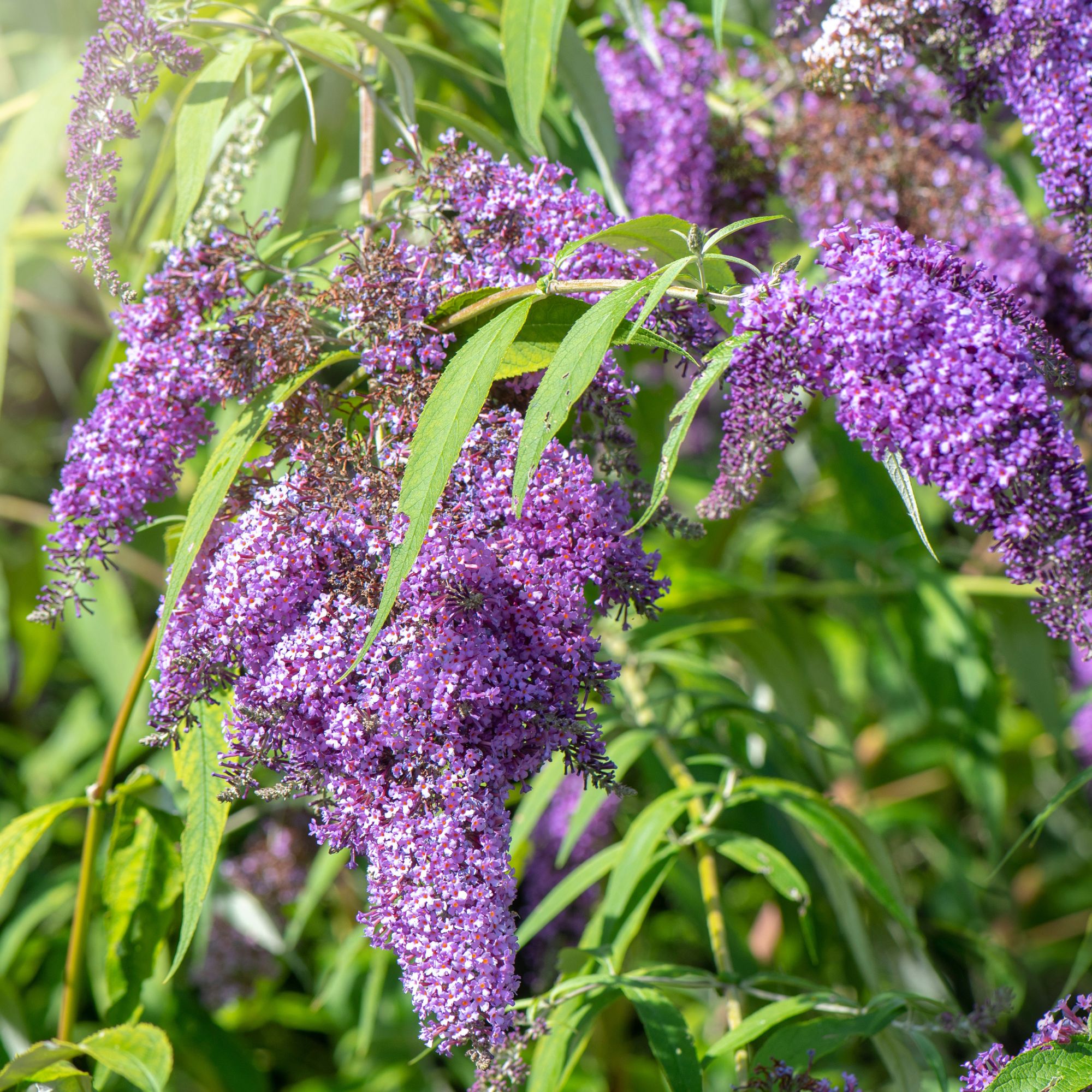
Whether you know it as buddleja, buddleia, or butterfly bush, there’s no denying that the cone-shaped flowers of this perennial are absolutely stunning. They also come in a variety of colours, making it seemingly perfect for a cottage garden idea.
But buddleja is considered to be an invasive species in the UK, and is known for popping up on roundabouts, wasteland, and even along railway lines. And even if you know when to cut buddleja back, you may still struggle to control its growth.
So, it’s probably best to find other ways to encourage wildlife in your garden.
What to plant instead: If your aim is to invite butterflies into the garden, opt for a lavender plant instead. It’s easy to care for and will come back year after year, with a delicious scent in tow.
Where to buy lavender:
- Sarah Raven: buy three lavender pots for under £15.
- Thompson & Morgan: a variety of lavender sizes and pots on offer.
FAQs
What are the disadvantages of perennials?
One of the biggest disadvantages of perennials is that they often take a few years to establish themselves. So, if you’re looking for immediate blooms, you may have to opt for something else.
Alongside this, perennials tend to have a shorter flowering period compared to annuals and they also take up more space. This only gets worse as they grow bigger each year, which means that you’ll have less space to grow other plants and crops in your garden.
Another disadvantage of perennials is that they offer less design versatility. When you commit to planting perennials, you’re also committing to those same colours and that same aesthetic for the next few years. If you were to choose annuals, however, you could mix up your garden design idea each year.
What is an example of a perennial problem?
A huge perennial problem is that many perennials can quickly grow out of hand and are invasive in nature. And while pruning and cutting back these perennials can potentially keep them in check, many perennials will continue to grow and take over your garden.
In some cases, perennials can grow so out of hand that they overpower your other plants and can even cause structural damage to your home.
Because of this, it’s best to choose your perennials wisely.
Just because you should avoid these perennials in the garden doesn’t mean that they’re all off the cards. So, just make sure you do your research!

Lauren Bradbury has been the Content Editor for the House Manual section since January 2025 but worked with the team as a freelancer for a year and a half before that. She graduated with a Bachelor’s degree in English and Creative Writing from the University of Chichester in 2016. Then, she dipped her toe into the world of content writing, primarily focusing on home content. After years of agency work, she decided to take the plunge and become a full-time freelancer for online publications, including Real Homes and Ideal Home, before taking on this permanent role. Now, she spends her days searching for the best decluttering and cleaning hacks and creating handy how-to guides for homeowners and renters alike, as well as testing vacuums as part of her role as the Ideal Home Certified Expert in Training on Vacuums, having spent over 110 hours testing different vacuum models to date!